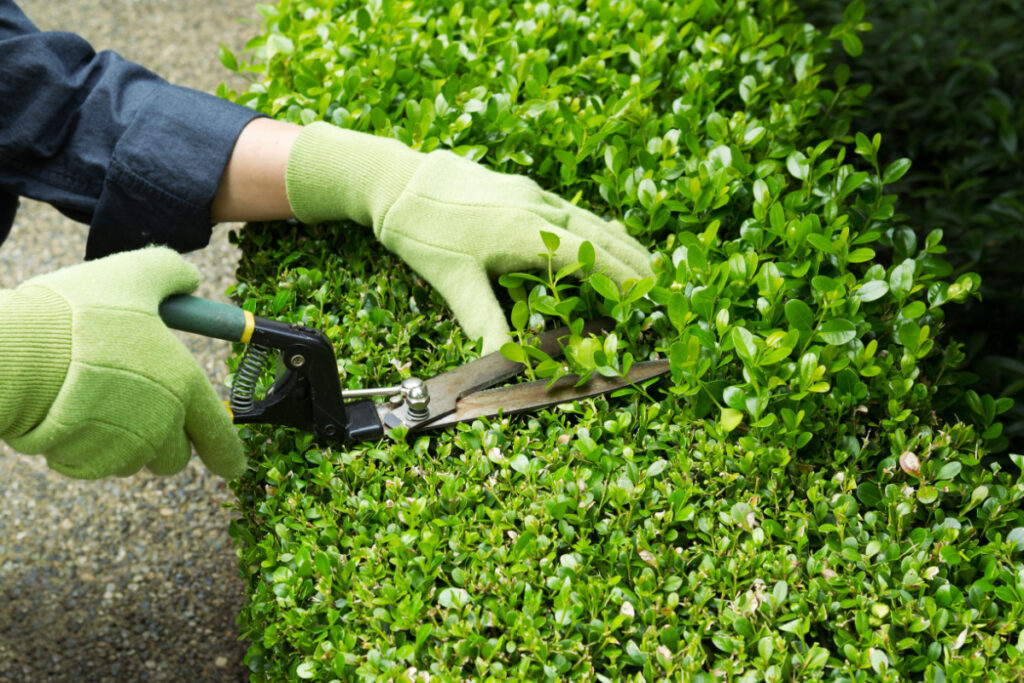When it comes to crafting a picturesque outdoor space, trees, shrubs, and ornamental plants play a pivotal role in transforming your landscape into a thriving canvas of natural beauty. Caring for shrubs and ornamental plants is an art that, when mastered, rewards you with a vibrant and lush garden that enhances the overall charm of your home. As professional landscape designers, we have witnessed firsthand the incredible difference that proper care can make to these outdoor plants. If you’re ready to nurture your outdoor greenery so it can reach its fullest potential, follow these five essential tips.
1. Choose the Right Plants for Your Environment
The first step in caring for shrubs and ornamental plants is selecting varieties that are well-suited to your local climate and soil conditions. While it’s tempting to go for exotic species, they may require excessive maintenance and struggle to thrive in your specific environment. Instead, talk with our landscaping professionals to identify native or adapted plants that can thrive with less effort.
Native plants have evolved to withstand the challenges of your region, making them hardier and more resilient. They also attract local wildlife and help maintain the delicate balance of your ecosystem. By selecting the right plants from the start, you’ll reduce the need for extensive care and ensure a healthier, more sustainable landscape.
2. Adequate Watering
Proper watering is the lifeblood of plants. However, different types of shrubs and ornamental plants have varying water requirements, so it’s crucial to understand the needs of each species in your garden. Here are some general watering guidelines to follow in the meantime:
- Newly planted shrubs and ornamental plants require frequent watering to establish their root systems. Water them deeply but less frequently (about every other day or every three days) to encourage roots to grow deeper into the soil.
- Mature plants often require less frequent watering (about once a week) but in larger quantities. Water deeply to saturate the root zone, promoting healthy growth. Make sure you water the plants in the morning or evening to avoid evaporation.
- Pay attention to signs of dehydration, such as wilting leaves or dry soil. Adjust your watering schedule accordingly.
- Invest in a drip irrigation system or soaker hoses to ensure consistent and efficient watering, especially during dry spells.
3. Pruning and Trimming
Pruning and trimming are essential aspects of caring for shrubs and ornamental plants. Regular maintenance not only keeps your outdoor greenery looking tidy and attractive but also promotes healthier growth. Follow these tips to successfully prune your shrubs:
- Prune your shrubs during the dormant season, typically in late winter or early spring, before new growth begins. This practice stimulates fresh growth and removes dead or diseased branches.
- Ornamental plants often benefit from deadheading, which involves removing spent flowers. This not only maintains the plant’s appearance but also encourages additional blooms.
- Avoid over-pruning, as it can weaken the plant and leave it vulnerable to pests and diseases. Consult one of our professionals if you’re unsure about the right pruning techniques for specific plants on your property.
4. Fertilization and Soil Health
Ensuring your soil is nutrient-rich and well-balanced is crucial for the long-term health of your shrubs and ornamental plants. Soil testing can help you determine any deficiencies and guide your fertilization regimen. As you fertilize your plants, remember to:
- Use organic mulch to help retain moisture, regulate soil temperature, and suppress weeds. As the mulch breaks down, it also enriches the soil with valuable nutrients.
- Select a balanced, slow-release fertilizer specifically formulated for trees and shrubs. Apply it in the spring when new growth begins and again in the late summer or early fall to support root development.
- Avoid excessive fertilization, as it can lead to rapid but weak growth, making your plants more susceptible to pests and diseases.
5. Pest and Disease Management
Vigilance is essential when it comes to protecting your plants from pests and diseases. Early detection and intervention can prevent minor issues from becoming major problems. Here’s how to care for shrubs and ornamental plants in this regard:
- Regularly inspect your plants for signs of trouble, such as discolored leaves, chewed foliage, or unusual growth patterns.
- Identify common pests and diseases in your region and learn about their life cycles and behaviors. This knowledge will help you take proactive measures to prevent infestations.
- In cases of severe infestations or diseases, consult with a professional for targeted treatment options.
Need Help Caring for Your Shrubs & Plants? Give Us a Call!
Caring for shrubs and ornamental plants is a fulfilling endeavor that transforms your outdoor space into a thriving haven of natural beauty. However, we understand not everyone has the time or desire to maintain their plants themselves. If you desire expert care and maintenance for your trees, shrubs, and ornamental plants, we offer comprehensive landscaping services to enhance the beauty and vitality of your outdoor space — all without you having to lift a finger!
Contact us today to schedule a service and transform your property into a breathtaking landscape that reflects your unique style and vision.

